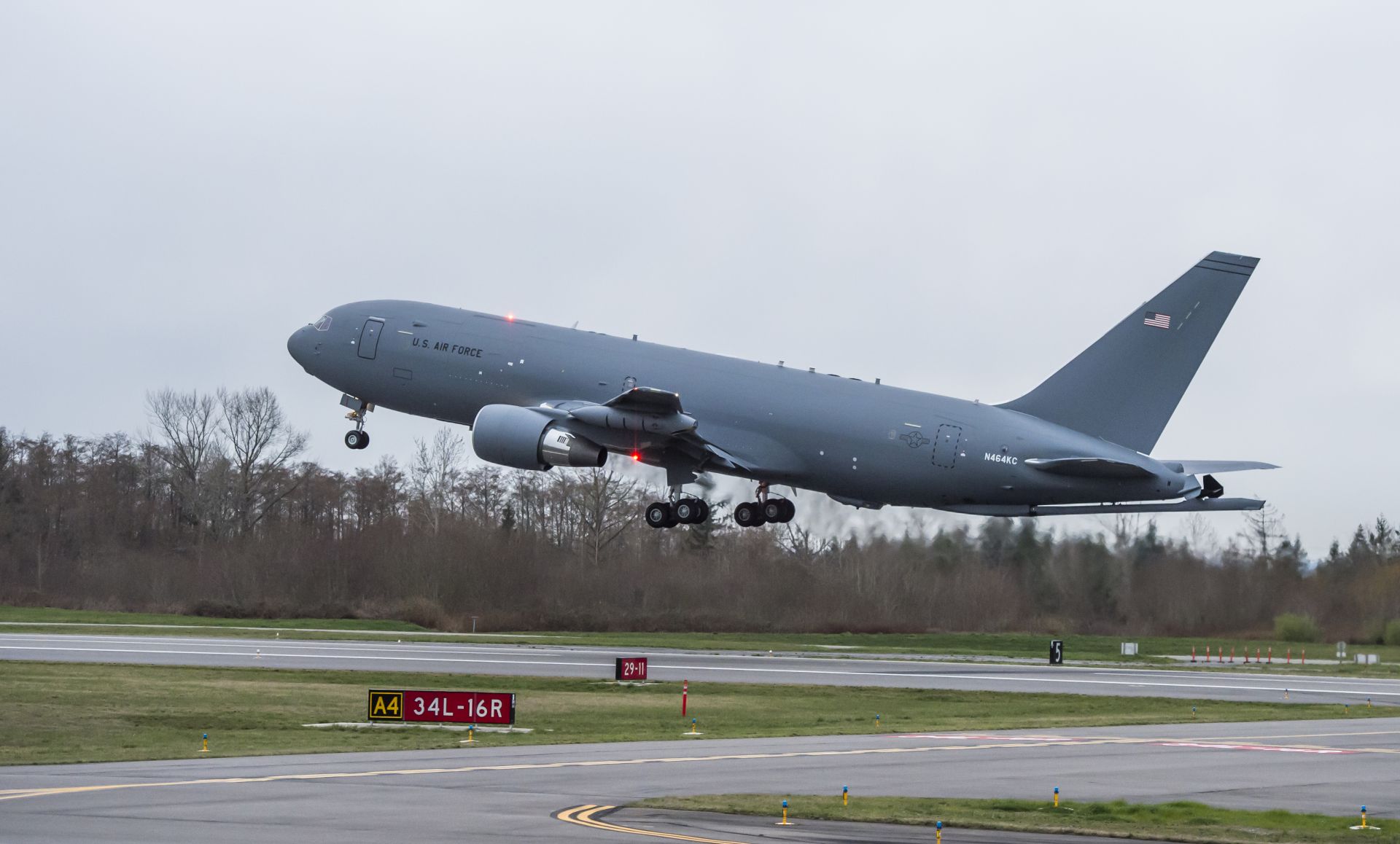The Boeing test team successfully completed the first flight of the program’s second KC-46A tanker aircraft yesterday, taking off from Paine Field and landing later at Boeing Field in Seattle.
During the flight, Boeing test pilots performed operational checks on engines, flight controls and environmental systems.
“Adding a second tanker to the flight test program is very important as we move into the next phase of testing,” said Col. John Newberry, U.S. Air Force KC-46 System program manager. “The team will initially use the aircraft to test mission system avionics and exterior lighting. Later, it will share the air refueling effort with the first KC-46.”
The Boeing team now will conduct a post-flight inspection and calibrate instrumentation prior to the next series of flights. As part of the overall flight test program, the KC-46 will demonstrate it can refuel 18 different aircraft. The second tanker will help share the test load and receiver certification.
Boeing was awarded a contract in 2011 to design and develop the U.S. Air Force’s next-generation tanker aircraft and is building four test aircraft – two are currently configured as 767-2Cs and two as KC-46A tankers.
EMD-1, a 767-2C test aircraft, has completed more than 260 flight test hours to date since its first flight in December 2014. EMD-2, the program’s first KC-46A tanker, made its maiden flight September 25, 2015 and has now completed more than 180 flight test hours. EMD-3, a 767-2C, will begin flight testing later this year.
The KC-46A is a multirole tanker Boeing is building for the U.S. Air Force that can refuel all allied and coalition military aircraft compatible with international aerial refueling procedures and can carry passengers, cargo and patients. Overall, Boeing plans to build 179 KC-46 aircraft for the U.S. Air Force.
Boeing Defense, Space & Security unit is a global leader in this marketplace and is the world’s largest and most versatile manufacturer of military aircraft. Headquartered in St. Louis, Defense, Space & Security is a $30 billion business with about 50,000 employees worldwide.










